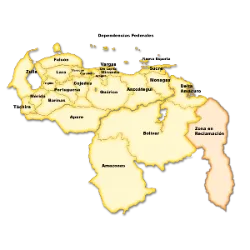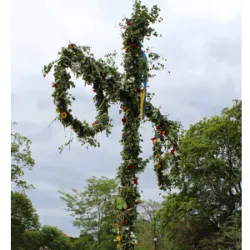Confira essas dicas e mande bem nos
 A salga é uma técnica milenar usada para conservar carnes e peixes antes da refrigeração. O sal reduz a umidade do alimento, impedindo a proliferação de bactérias.
A salga é uma técnica milenar usada para conservar carnes e peixes antes da refrigeração. O sal reduz a umidade do alimento, impedindo a proliferação de bactérias.Como funciona:
O sal atua por osmose, retirando a água dos tecidos do alimento e criando um ambiente desfavorável aos microrganismos.
Origem histórica:
Utilizada por egípcios, romanos e povos asiáticos, a salga foi essencial para viagens, guerras e períodos de escassez. O sal chegou a ter valor econômico comparável ao ouro.
Exemplos famosos:
Bacalhau salgado (Portugal)
Charque e carne-seca (Brasil)
Anchovas salgadas (Itália)
Receita tradicional – Carne-seca simples
Ingredientes:
1 kg de carne bovina (patinho ou coxão duro)
Sal grosso
Modo de preparo
Corte a carne em tiras grossas e cubra totalmente com sal grosso. Coloque em um recipiente, cubra e deixe descansar por 24 horas na geladeira.
Escorra o líquido, pendure ou deixe em local ventilado por 2 a 3 dias para secar.
Antes de consumir, dessalgue em água por algumas horas.
 O escabeche de peixe é um prato antigo, conhecido pelo sabor marcante e pela excelente conservação dos alimentos. Muito popular em Portugal, Espanha e no Brasil, ele atravessou séculos e culturas.
O escabeche de peixe é um prato antigo, conhecido pelo sabor marcante e pela excelente conservação dos alimentos. Muito popular em Portugal, Espanha e no Brasil, ele atravessou séculos e culturas.História e Origem
A palavra escabeche vem do árabe al-sikbaj, um método de conservar carnes e peixes em vinagre e especiarias. A técnica foi difundida na Península Ibérica durante a ocupação árabe e, mais tarde, levada para a América pelos colonizadores portugueses e espanhóis. Antes da refrigeração, o escabeche era essencial para preservar o peixe por mais tempo, mantendo sabor e segurança alimentar.
Escabeche no Brasil
No Brasil, o escabeche ganhou adaptações regionais, sendo muito comum com sardinha, pescada ou cavalinha, servido frio ou em temperatura ambiente, ideal para dias quentes.
Receita Tradicional de Escabeche de Peixe
Ingredientes:
1 kg de peixe em postas
2 cebolas em rodelas
3 dentes de alho
1/2 xícara de vinagre
1/2 xícara de azeite
1 tomate fatiado
Sal, pimenta e louro a gosto
Modo de preparo:
Tempere o peixe com sal e pimenta, frite levemente e reserve. Refogue a cebola, o alho e o tomate no azeite, acrescente o vinagre e o louro. Monte em camadas com o peixe e deixe apurar. Sirva após esfriar.
 Interesse dos Estados Unidos na Venezuela: Entenda os Motivos
Interesse dos Estados Unidos na Venezuela: Entenda os MotivosO interesse dos Estados Unidos na Venezuela é antigo e está ligado a fatores estratégicos, econômicos e geopolíticos que permanecem relevantes ao longo do tempo.
Petróleo e recursos naturais
A Venezuela possui uma das maiores reservas de petróleo do mundo. Historicamente, os EUA buscam garantir acesso seguro a fontes de energia estratégicas, reduzindo riscos de dependência externa.
Estabilidade e segurança regional
A instabilidade política e econômica venezuelana afeta toda a América Latina, gerando crises migratórias e tensões regionais. Para os EUA, a estabilidade no hemisfério ocidental é vista como essencial para sua própria segurança.
Influência geopolítica
A aproximação da Venezuela com países como Rússia, China e Irã desperta atenção dos Estados Unidos, que tradicionalmente procuram limitar a influência de potências rivais na região.
Democracia e direitos humanos
O discurso norte-americano destaca a defesa da democracia, eleições livres e direitos humanos, frequentemente citando a situação venezuelana como motivo de preocupação.
Economia e comércio
Antes da crise, a Venezuela era um parceiro comercial relevante. Um cenário de estabilidade poderia reabrir oportunidades econômicas e investimentos.
 2 de janeiro dia de São Basílio Magno e São Gregório de Nazianzeno dois dos maiores pensadores do cristianismo do século IV e figuras centrais da Igreja primitiva. Amigos próximos e bispos, eles ficaram conhecidos como Padres Capadócios, por sua atuação na região da Capadócia, na atual Turquia.
2 de janeiro dia de São Basílio Magno e São Gregório de Nazianzeno dois dos maiores pensadores do cristianismo do século IV e figuras centrais da Igreja primitiva. Amigos próximos e bispos, eles ficaram conhecidos como Padres Capadócios, por sua atuação na região da Capadócia, na atual Turquia.São Basílio Magno(330–379)
Basílio foi bispo de Cesareia e destacou-se pela defesa da fé cristã contra heresias, especialmente o arianismo. É considerado um dos fundadores do monaquismo cristão, criando regras que influenciam a vida monástica até hoje. Também foi um grande defensor dos pobres, criando hospitais e obras de caridade, conhecidas como Basiliades.
São Gregório de Nazianzeno(329–390)
Gregório foi um dos maiores teólogos da Igreja e recebeu o título de “Teólogo” por sua profundidade intelectual. Atuou como arcebispo de Constantinopla e teve papel decisivo na formulação da doutrina da Santíssima Trindade, sendo fundamental no Concílio de Constantinopla (381).
Legado em comum
Juntos, Basílio e Gregório ajudaram a consolidar a teologia cristã, unindo fé, razão e ação social. Seus escritos continuam sendo referência para católicos e ortodoxos, influenciando a espiritualidade cristã há mais de 1.600 anos.
 Vila Nova de Paiva afirma-se como um destino de referência para os apreciadores da gastronomia tradicional portuguesa, com especial destaque para os pratos que valorizam a carne de caça e o peixe dos seus rios. A cozinha local alia ingredientes endógenos a saberes antigos, resultando em sabores únicos que refletem a identidade cultural da região.
Vila Nova de Paiva afirma-se como um destino de referência para os apreciadores da gastronomia tradicional portuguesa, com especial destaque para os pratos que valorizam a carne de caça e o peixe dos seus rios. A cozinha local alia ingredientes endógenos a saberes antigos, resultando em sabores únicos que refletem a identidade cultural da região.Entre os pratos mais emblemáticos está o coelho guisado com carqueja, uma erva aromática típica das serras beirãs, que confere um aroma especial à carne. O javali e o carneiro ensopado também têm lugar de honra nas mesas locais, realçando a forte tradição cinegética do concelho.
No capítulo do peixe, a truta com molho de escabeche, proveniente das águas frias e límpidas do Rio Paiva, é uma iguaria de eleição. A caldeirada de cabrito, rica em sabores e tradição, completa a oferta de pratos principais, revelando a influência pastoril das freguesias do concelho.
A freguesia de Pendilhe ganha destaque pela produção artesanal de defumados, como o salpicão, apreciado pela sua textura e sabor intenso. Esta gastronomia autêntica e enraizada promete uma verdadeira viagem sensorial pela alma das Terras do Demo.
 Harry Potter
Harry Potter Acadêmico
Acadêmico Stranger Things
Stranger Things The Walking Dead
The Walking Dead Esportes
Esportes Cervejas
Cervejas Música
Música Games
Games Copa Libertadores
Copa Libertadores Cinema e TV
Cinema e TV Turismo
Turismo Copa Futebol Feminino
Copa Futebol Feminino Samba & Pagode
Samba & Pagode KPOP
KPOP Basquetebol
Basquetebol Língua Portuguesa
Língua Portuguesa Jogos eletrônicos
Jogos eletrônicos Portugal
Portugal Físico-Química
Físico-Química Forró
Forró Surf
Surf RPG
RPG MarioBros
MarioBros Turismo América do Norte
Turismo América do Norte Jogos de carta
Jogos de carta Tênis
Tênis Hip Hop
Hip Hop Música Pop
Música Pop MPB
MPB Voleibol
Voleibol Rock n Roll
Rock n Roll Natação
Natação Cinema
Cinema Ciências Naturais
Ciências Naturais Sertanejo
Sertanejo Geografia
Geografia Séries de TV
Séries de TV Novelas brasileiras
Novelas brasileiras Turismo Europa
Turismo Europa Matemática
Matemática MineCraft
MineCraft Roblox
Roblox Astrologia
Astrologia Atletismo
Atletismo FortNite
FortNite Turismo América do Sul
Turismo América do Sul Olimpiadas
Olimpiadas Futebol
Futebol Funk
Funk Ginástica
Ginástica Jogos de tabuleiro
Jogos de tabuleiro Barbie
Barbie Língua Inglesa
Língua Inglesa História
História Folclore Português
Folclore Português Animações
Animações Turismo no Brasil
Turismo no Brasil Magic the Gathering
Magic the Gathering Turismo na França
Turismo na França Turismo na Venezuela
Turismo na Venezuela Turismo no Chile
Turismo no Chile Vinhos Portugueses
Vinhos Portugueses Turismo em Portugal
Turismo em Portugal Variedades
Variedades Turismo no Canadá
Turismo no Canadá Futebol Brasileiro
Futebol Brasileiro Turismo em Bonaire
Turismo em Bonaire NBA
NBA Turismo no Reino Unido
Turismo no Reino Unido Anime
Anime BlockBusters
BlockBusters Turismo no Suriname
Turismo no Suriname Uruguai
Uruguai Turismo na Argentina
Turismo na Argentina Turismo no México
Turismo no México Guiana Francesa
Guiana Francesa Turismo no Paraguai
Turismo no Paraguai Yoga
Yoga Turismo em Guiana
Turismo em Guiana Brasileirão
Brasileirão Turismo no Peru
Turismo no Peru Turismo em Aruba
Turismo em Aruba Futebol Espanhol
Futebol Espanhol Futebol Português
Futebol Português Turismo Estados Unidos
Turismo Estados Unidos Desenhos Animados
Desenhos Animados Turismo na Colombia
Turismo na Colombia Turismo na Bolívia
Turismo na Bolívia Turismo na Espanha
Turismo na Espanha Turismo na Itália
Turismo na Itália Turismo Ilhas Malvinas
Turismo Ilhas Malvinas Turismo em Curaçau
Turismo em Curaçau SL Benfica
SL Benfica Idade Antiga
Idade Antiga Pré-História
Pré-História Piadas de Loiras
Piadas de Loiras Marvel
Marvel Inglês Avançado
Inglês AvançadoSabia que hoje é dia de..
 5 de janeiro dia de São Simeão Estilista, é uma data religiosa dedicada a um dos grandes santos da Igreja Ortodoxa. Simeão, conhecido como o "Estilista", foi um monge cristão do século VI, que dedicou sua vida ao monaquismo e à busca pela pureza espiritual, vivendo de maneira austera em uma caverna no deserto da Síria.
5 de janeiro dia de São Simeão Estilista, é uma data religiosa dedicada a um dos grandes santos da Igreja Ortodoxa. Simeão, conhecido como o "Estilista", foi um monge cristão do século VI, que dedicou sua vida ao monaquismo e à busca pela pureza espiritual, vivendo de maneira austera em uma caverna no deserto da Síria.São Simeão Estilista nasceu em uma época de grande fervor religioso e reformas dentro da Igreja Oriental. Ele é lembrado por sua vida de penitência e oração contínua, escolhendo viver em isolamento para buscar uma união mais profunda com Deus. A palavra "Estilista" vem do termo grego "stylos", que significa "coluna", simbolizando a forma como Simeão se tornou um pilar de fé para muitos cristãos da época.
São Simeão é frequentemente associado à prática do estilo de vida ascético, que envolve a renúncia ao conforto material em favor de uma vida de oração, jejum e meditação. Ele também ficou conhecido por sua capacidade de curar e ajudar aqueles que procuravam orientação espiritual.
A Igreja Ortodoxa comemora este dia para honrar o exemplo de fé e dedicação de Simeão, inspirando os fiéis a viverem com mais devoção e humildade.
 5 de janeiro dia do Keto nos Estados Unidos. A data foi criada para aumentar a conscientização sobre a dieta cetogênica (Keto), um estilo alimentar que prioriza o consumo de gorduras saudáveis, proteínas moderadas e uma redução significativa de carboidratos. O objetivo da dieta é induzir o estado de cetose, no qual o corpo queima gordura como fonte primária de energia em vez de carboidratos.
5 de janeiro dia do Keto nos Estados Unidos. A data foi criada para aumentar a conscientização sobre a dieta cetogênica (Keto), um estilo alimentar que prioriza o consumo de gorduras saudáveis, proteínas moderadas e uma redução significativa de carboidratos. O objetivo da dieta é induzir o estado de cetose, no qual o corpo queima gordura como fonte primária de energia em vez de carboidratos.A dieta cetogênica tem origem médica, sendo desenvolvida inicialmente nos anos 1920 para ajudar no tratamento de pacientes com epilepsia. Com o passar do tempo, ela ganhou popularidade como um estilo de vida e estratégia para perda de peso, controle de diabetes tipo 2 e melhora da saúde metabólica. O Dia Nacional do Keto foi estabelecido para celebrar os benefícios dessa abordagem alimentar e incentivar as pessoas a aprenderem mais sobre como ela pode melhorar a saúde e o bem-estar.
 5 de janeiro é dia do Chantilly nos Estados Unidos. Esta data foi criada para celebrar o chantilly, uma deliciosa cobertura feita de creme de leite batido com açúcar e, frequentemente, aromatizado com baunilha. É um ingrediente popular em muitas sobremesas, como tortas, bolos, sundaes e bebidas como chocolate quente e café.
5 de janeiro é dia do Chantilly nos Estados Unidos. Esta data foi criada para celebrar o chantilly, uma deliciosa cobertura feita de creme de leite batido com açúcar e, frequentemente, aromatizado com baunilha. É um ingrediente popular em muitas sobremesas, como tortas, bolos, sundaes e bebidas como chocolate quente e café.A data foi escolhida para coincidir com o aniversário do invento da primeira batedeira elétrica, em 5 de janeiro de 1865, que facilitou a preparação do chantilly. A invenção dessa máquina foi um marco importante na história da culinária, pois tornou mais fácil bater o creme de leite até atingir a consistência leve e aerada do chantilly, popularizando ainda mais o ingrediente.
O objetivo da data é celebrar essa cobertura versátil e deliciosa e incentivar as pessoas a usá-la de maneira criativa em suas receitas, seja em pratos doces ou até mesmo em algumas receitas salgadas.
 5 de janeiro dia da Criação da Primeira Tipografia no Brasil e celebra a introdução da impressão no país, um marco histórico na disseminação do conhecimento e da cultura. Essa data faz referência ao dia em que, em 1808, foi criada a Impressora Régia, a primeira tipografia do Brasil, durante o reinado de Dom João VI.
5 de janeiro dia da Criação da Primeira Tipografia no Brasil e celebra a introdução da impressão no país, um marco histórico na disseminação do conhecimento e da cultura. Essa data faz referência ao dia em que, em 1808, foi criada a Impressora Régia, a primeira tipografia do Brasil, durante o reinado de Dom João VI.A Impressora Régia foi fundada por Dom João VI em 1808, logo após a corte portuguesa se transferir para o Brasil devido às invasões napoleônicas. Antes disso, o Brasil dependia da importação de livros e publicações da Europa. A criação da tipografia foi uma medida importante para o desenvolvimento cultural e educacional do país, permitindo a impressão de livros, jornais, decretos e outros documentos essenciais para a administração e o avanço do conhecimento.
 5 de janeiro dia da Abreugrafia no Brasil e homenageia a técnica de abreuografia, um exame de imagem utilizado para detectar doenças pulmonares, como a tuberculose. Essa data é importante para destacar os avanços na medicina e as práticas de prevenção à saúde, especialmente na detecção precoce de doenças respiratórias.
5 de janeiro dia da Abreugrafia no Brasil e homenageia a técnica de abreuografia, um exame de imagem utilizado para detectar doenças pulmonares, como a tuberculose. Essa data é importante para destacar os avanços na medicina e as práticas de prevenção à saúde, especialmente na detecção precoce de doenças respiratórias.A abreugrafia foi desenvolvida pelo médico brasileiro Ely Correa Abreu, que, no início do século XX, criou um método mais acessível e simples de realizar radiografias do tórax, facilitando a detecção de doenças como a tuberculose. O exame tornou-se uma ferramenta importante para campanhas de saúde pública, especialmente no combate à tuberculose no Brasil.
Confira outras curiosidades e desafios de quiz

O Magusto é uma festividade entre outubro e novembro, associada a datas como o Dia de São Simão, Todos os Santos e São Martinho. É celebrado em torno de fogueiras, assando castanhas com jeropiga, água-pé ou vinho novo. Os corajosos pulam a fogueira, e "enfarruscar" com cinzas faz parte da tradição. Apesar da chuva no outono, o "verão de São Martinho" traz sol. A lenda de São Martinho, relacionada a um dia chuvoso, explica esse fenômeno. Uma tradição específica, o "Magusto da Velha", ocorre em Aldeia de Viçosa em 26 de dezembro, homenageando uma velha rica com lançamento de castanhas do campanário e orações. O evento em Barqueiros, Mesão Frio, conecta o magusto a rituais antigos em homenagem aos mortos.

Os Chapéus de Palha, o grupo de piratas liderado por Luffy, recebeu esse nome devido ao chapéu de palha que Luffy sempre usa. Cada membro do grupo tem um objetivo pessoal em sua jornada. O mundo de One Piece é habitado por uma grande variedade de personagens, incluindo humanos, criaturas marinhas, animais antropomórficos e até mesmo gigantes.

Os compostos complexos de metais de transição vêm chamando atenção na área da química por causa de suas estruturas variadas e de suas cores intensas. Esses materiais são formados quando um metal de transição se liga a diferentes moléculas ou íons chamados ligantes, criando arranjos geométricos como formas octaédricas, tetraédricas ou quadrado-planares. Cada tipo de geometria influencia diretamente o comportamento químico do complexo.
Um dos aspectos mais fascinantes é a origem das cores, que surge das transições de elétrons entre diferentes níveis de energia presentes nos orbitais do metal. Quando a luz incide sobre o complexo, parte dela é absorvida e parte é refletida; a cor percebida depende justamente dessa diferença energética entre os orbitais, que varia conforme o metal e os ligantes envolvidos.
Além de seu interesse visual, esses compostos desempenham papel importante em diversas áreas práticas. Eles podem atuar em processos catalíticos, em materiais utilizados em sensores e em sistemas que dependem de propriedades ópticas específicas. Compreender sua estrutura e suas características é essencial para desenvolver aplicações mais eficientes e ampliar o uso desses materiais no cotidiano científico e tecnológico.

A postura Viparita Karani é realizada deitando-se de costas e mantendo as pernas estendidas verticalmente, usando a parede como suporte. Embora muitas vezes associada a iniciantes, é reconhecida por oferecer benefícios significativos para diversos perfis de praticantes.
A posição reduz o esforço da musculatura profunda do tronco e alivia a região lombar, tornando-se uma opção segura para idosos e pessoas em recuperação física. Em muitas aulas, acessórios como almofadas e blocos ajudam a ajustar o quadril e tornar a permanência mais confortável.
A prática também desacelera o ritmo cardíaco, favorece o retorno venoso das pernas e funciona como uma forma natural de reduzir tensões acumuladas ao longo do dia. Costuma ser utilizada como transição antes de sequências mais intensas ou no encerramento de sessões voltadas à consciência corporal. A recomendação é permanecer imóvel por alguns minutos, com atenção à respiração, permitindo que o corpo relaxe gradualmente.

O duelo entre Flamengo e Palmeiras ganhou um peso único na Libertadores nos últimos anos, transformando-se em um encontro que simboliza o auge do futebol sul-americano. De um lado, o Flamengo chega com seu estilo ofensivo, elenco estrelado e uma torcida que trata cada decisão como destino. Do outro, o Palmeiras representa a consistência competitiva, a força tática e a experiência acumulada em campanhas recentes. A final em Lima adiciona ainda mais charme à disputa. Foi lá que o Flamengo viveu uma de suas noites mais históricas, e agora reencontrar o palco reacende memórias e expectativas. Para o Palmeiras, a chance de vencer em um cenário emblemático cria um novo capítulo para um clube que se acostumou a decidir. Mais do que um simples confronto, Flamengo x Palmeiras virou sinônimo de era dourada da competição: duas potências, dois estilos e um troféu que parece sempre passar por eles. Cada encontro se torna um retrato do futebol brasileiro no seu mais alto nível.

O yoga tem se destacado não apenas como prática física, mas como um estilo de vida completo, que integra alimentação consciente, sono adequado e hábitos saudáveis. Mais do que exercícios, suas técnicas incentivam atenção plena, autocuidado e equilíbrio emocional, promovendo bem-estar integral no dia a dia moderno. A prática pode ser adaptada para diferentes públicos, incluindo crianças, idosos, gestantes e pessoas com deficiência, tornando o yoga acessível a todos os corpos e necessidades. Posturas, respiração e meditação podem ser ajustadas para cada nível, garantindo segurança e benefícios efetivos. Estudos científicos comprovam os efeitos positivos do yoga: ajuda na redução do estresse, melhora a postura, aumenta a flexibilidade e contribui para o equilíbrio emocional. Além disso, a prática regular promove consciência corporal, força e estabilidade, tornando-se uma ferramenta eficaz para lidar com a rotina agitada e os desafios do estilo de vida moderno. Assim, o yoga se consolida como um caminho que une corpo, mente e hábitos saudáveis, mostrando que cuidar de si mesmo vai muito além do físico, refletindo em qualidade de vida e bem-estar integral.

A tão aguardada 5.ª temporada de Stranger Things, que marcará o fim da série, já tem data definida e promete um desfecho épico. A Netflix confirmou que serão oito episódios, lançados em três partes. Esta última temporada se passa no outono de 1987, com um salto temporal desde os eventos da temporada 4. Hawkins vive sob quarentena militar, enquanto Eleven precisa se esconder, e a caçada a Vecna, embora ele tenha sumido, se intensifica.
Os criadores, os irmãos Duffer, já afirmaram que sempre souberam como seria o desfecho — eles planejam uma das cenas finais há seis ou sete anos, buscando entregar um final emocional à altura da trajetória da série.
No elenco, retornam nomes como Millie Bobby Brown (Eleven), Finn Wolfhard (Mike), David Harbour (Hopper), junto com novidades, como Linda Hamilton, prometendo reforçar a dramaticidade desse capítulo final.
Segundo os produtores, todos os mistérios do “Mundo Invertido” — de Vecna aos Demogorgons e outros arcos abertos — serão resolvidos nesta temporada, culminando numa batalha final decisiva.

O concelho de Oeiras, conhecido pelas suas praias, falésias e património histórico, tornou-se recentemente cenário de destaque para a televisão portuguesa. A série “O Grito”, dirigida por Leonel Vieira e protagonizada por Daniela Ruah e Sara Matos, foi totalmente filmada em Oeiras, transformando locais familiares em cenários de suspense e mistério.
Entre os espaços utilizados estão o Parque dos Poetas, com as suas esculturas e trilhos tranquilos; o Passeio Marítimo de Algés, que oferece vistas deslumbrantes sobre o rio Tejo; e a Praia da Torre, que combina a força das ondas com a serenidade de pequenas enseadas. Cada local foi cuidadosamente escolhido para refletir a atmosfera intensa da narrativa, mostrando Oeiras de uma forma inédita para muitos moradores e visitantes.
Para além do entretenimento, a série destaca o potencial do concelho como cenário cinematográfico versátil, capaz de acomodar produções de grande qualidade. A presença de “O Grito” evidencia que, entre história, cultura e natureza, Oeiras também é palco de histórias contadas pelo cinema e pela televisão.

A Terra é composta por várias camadas que se diferenciam por composição, temperatura e propriedades físicas. No núcleo, localizado no centro do planeta, encontramos duas partes: o núcleo interno, sólido, formado principalmente por ferro e níquel, e o núcleo externo, líquido, responsável pela geração do campo magnético terrestre. Acima do núcleo está o manto, uma camada espessa de rochas quentes e semissólidas que se movimentam lentamente, provocando fenômenos como vulcões e terremotos. A parte mais externa é a crosta, fina e rígida, onde vivemos; ela se divide em crosta continental, mais espessa e composta por granitos, e crosta oceânica, mais fina e formada por basalto. Entre a crosta e o manto existe a astenosfera, uma região parcialmente derretida que permite o deslocamento das placas tectônicas. Essas camadas interagem constantemente, moldando a superfície do planeta, formando montanhas, vales, vulcões e oceanos. O estudo da estrutura da Terra é essencial para entender fenômenos naturais, explorar recursos minerais e avaliar riscos geológicos. Assim, o planeta revela uma dinâmica interna contínua que sustenta a vida e transforma a paisagem ao longo do tempo.

O poema “Jabberwocky” é o mais famoso poema nonsense de Lewis Carroll, presente em Através do Espelho e o que Alice encontrou lá, 1871. Mistura palavras inventadas com sonoridade poética.
Jaguadarte
Era briluz. As lesmolisas touvas
roldavam e relviam nos gramilvos;
estavam mimsicais as pintalouvas,
e os momirratos davam grilvos.
“Cuidado! O Jaguadarte, meu filho!
as garras que agarram, a bocarra que morde!
Cuidado com o pássaro Júbju!
Fuja do frumioso Bandersnorte!”
Ele arrancou a espada vorpalina:
foi atrás do inimigo manxome.
Junto ao Tumtumeiro descansou,
e ficou cismando, em plúmbea meditação.
E no ufano pensamento eis que,
com olhos de fogo, o Jaguadarte
veio fuzilando pelo bosque tulgi,
e roncava enquanto vinha!
Um, dois! Um, dois! E a espada vorpalina
vai-vem, vem-vai, para cá e para lá!
Trinchou o monstro e, finda a peleja,
com a cabeça triunfante voltou galumphando.
“Matou o Jaguadarte? Abraça-me,
menino luzidio! Frabjoso dia!
Callooh! Callay!” — ele riu em seu júbilo.
Era briluz. As lesmolisas touvas
roldavam e relviam nos gramilvos;
estavam mimsicais as pintalouvas,
e os momirratos davam grilvos.

O clássico de terror Poltergeist (1982), dirigido por Tobe Hooper e produzido por Steven Spielberg, ficou famoso não apenas por sua história assustadora, mas também pela chamada “maldição de Poltergeist”. Ao longo dos anos, diversos membros do elenco e da equipe técnica morreram de forma precoce e, muitas vezes, misteriosa, alimentando lendas em torno da produção.
Heather O’Rourke, que interpretou a pequena Carol Anne, faleceu aos 12 anos devido a complicações médicas inesperadas, enquanto Dominique Dunne, que viveu Dana, foi assassinada por seu ex-namorado pouco após as filmagens. Outros atores e pessoas ligadas ao filme também sofreram mortes prematuras, muitas delas atribuídas a acidentes ou doenças súbitas, reforçando a aura de mistério que envolve a obra.
Especialistas e fãs de filmes de terror apontam que essas tragédias, somadas aos eventos paranormais retratados no longa, contribuíram para que Poltergeist se tornasse uma lenda urbana no mundo cinematográfico. A combinação de terror na tela e acontecimentos fora dela transformou o filme em um ícone do gênero, provocando fascínio e medo décadas depois de seu lançamento.

Tudo começou com Adão e Eva, o primeiro homem e a primeira mulher criados por Deus. Eles viviam no Jardim do Éden, um lugar lindo e perfeito. Mas um dia, desobedeceram a Deus e comeram o fruto proibido. Isso nos ensina a importância de obedecer a Deus e fazer o que é certo.
Depois, temos a história emocionante de Moisés! Ele foi escolhido por Deus para libertar o povo de Israel da escravidão no Egito. Com a ajuda de Deus, Moisés abriu o Mar Vermelho, e o povo passou por terra seca! Uau! Imagina só ver um mar se abrindo! Essa história mostra como Deus cuida de quem confia nele.
E não podemos esquecer de Davi e Golias. Davi era um menino pastor que enfrentou o gigante Golias com apenas uma pedra e um estilingue. Ele não teve medo porque sabia que Deus estava com ele. E venceu! Essa história mostra que, mesmo pequenos, podemos vencer grandes desafios quando confiamos em Deus.

As festas juninas na Suécia, conhecidas como Midsommarafton, são consideradas as celebrações nacionais mais importantes do país, superando até o Natal em participação popular. Realizadas entre 20 e 26 de junho, a sexta-feira é o dia tradicional para a comemoração, marcada por diversas tradições típicas.
Um dos símbolos centrais da festa é o majstången — um mastro decorado com flores e folhas, erguido no centro das vilas, em torno do qual os participantes dançam em círculo. Essa tradição tem raízes comuns ao mastro de maio dos povos germânicos e está ligada à fertilidade e à renovação da natureza.
Durante o Midsommarafton, as pessoas se vestem com roupas rurais, cantam cânticos tradicionais e celebram com comidas típicas da estação, como morangos e batatas. Simpatias também fazem parte da festa, especialmente entre as moças, que confeccionam buquês com sete ou nove flores para sonhar com seus futuros maridos.
Além disso, a crença popular diz que as ervas colhidas nessa época possuem poderes especiais e que a água das fontes traz saúde. Casas são decoradas com flores e folhas para atrair sorte. Grandes cidades como Estocolmo e Gotemburgo ficam quase vazias, pois os suecos se refugiam nas casas de veraneio para celebrar a data. Os tradicionais balões da festa, porém, costumam causar acidentes frequentes.

A grande novidade para a edição de 2025 da Copa do Mundo de Clubes será a presença do Inter Miami CF, clube dos Estados Unidos, que garantiu uma vaga como representante do país-sede. O time norte-americano, que ganhou notoriedade com a chegada do astro Lionel Messi em 2023, conquistou sua classificação ao vencer o MLS Supporters' Shield de 2024, prêmio dado ao time com a melhor campanha na temporada regular da Major League Soccer (MLS).
Essa vaga, inédita para o clube e exclusiva para a equipe do país anfitrião, marca uma importante participação para o futebol dos Estados Unidos, que está em ascensão com o aumento do interesse por grandes estrelas internacionais e o crescimento das competições domésticas. Além disso, a presença do Inter Miami CF no torneio coloca o futebol norte-americano no centro das atenções, atraindo ainda mais público e patrocinadores para o esporte no país.
A classificação do Inter Miami também representa a importância de um campeonato competitivo como a MLS, que começa a se consolidar como uma liga relevante no cenário global. O clube agora terá a chance de enfrentar alguns dos melhores times do mundo no Mundial de Clubes 2025, com a expectativa de deixar sua marca na história do torneio.

Para escolher a cerveja perfeita, experimente diferentes estilos e marcas, leve em conta a harmonização com alimentos e considere sabores, acidez e teor alcoólico. Por exemplo, para massas, escolha Dark Lager, Strong Ale ou Pilsner, enquanto para churrasco, opte por Pilsner, Stout ou Brown Ale. Frutos do mar combinam bem com English Pale Ale, Amber Ale, Hefeweizen e Witbier, e para sobremesas, escolha Stout, Porter ou Fruit Lambic. Queijos podem ser acompanhados por diversas cervejas, mas as escuras como Porter e Stout geralmente funcionam bem. Se for comida vegetariana, a Pilsner é uma boa escolha devido à variedade de ingredientes vegetarianos.
No blog do Syndicato, você encontra mais dicas sobre combinações ideais.

Inaugurado em 1978, o Zoológico Municipal de Volta Redonda se consolidou como um dos maiores e mais importantes espaços de preservação ambiental e lazer do estado do Rio de Janeiro. Localizado no bairro Vila Santa Cecília, o local foi criado com o objetivo de proporcionar contato com a natureza em meio a uma cidade industrial, oferecendo educação ambiental à população e protegendo a fauna silvestre.
Com mais de 300 animais de diferentes espécies — entre aves, mamíferos e répteis — o zoológico se tornou referência regional em cuidados veterinários e programas de conservação. Entre os destaques estão o viveiro de imersão e os espaços temáticos voltados à educação das crianças sobre a importância da biodiversidade e do meio ambiente.
Além de sua função educativa, o zoológico é um dos pontos turísticos mais visitados da cidade, recebendo milhares de visitantes por ano. O espaço conta com trilhas, áreas para piqueniques e parquinhos, integrando lazer e consciência ambiental.
Ao longo dos anos, o Zoológico de Volta Redonda vem passando por reformas e melhorias estruturais, reafirmando seu papel não só como destino turístico, mas também como símbolo da relação entre desenvolvimento urbano e sustentabilidade ambiental.

Realismo / Naturalismo / Parnasianismo (século XIX)
Machado de Assis (Dom Casmurro) – Brasil
Eça de Queirós (O Primo Basílio) – Portugal
Gustave Flaubert (Madame Bovary) – França
Lima Barreto (Triste Fim de Policarpo Quaresma) – Brasil
Olavo Bilac – Poesia parnasiana – Brasil
Émile Zola – Naturalismo francês
Modernismo (século XX – até 1945)
James Joyce (Ulisses) – Irlanda
Virginia Woolf (Mrs. Dalloway) – Inglaterra
Franz Kafka (A Metamorfose) – Tchecoslováquia
Mário de Andrade (Macunaíma) – Brasil
Oswald de Andrade (Manifesto Antropofágico) – Brasil
Carlos Drummond de Andrade – Poesia moderna – Brasil
Contemporânea (pós-1945 até hoje)
Clarice Lispector (A Hora da Estrela) – Brasil
Gabriel García Márquez (Cem Anos de Solidão) – Colômbia
José Saramago (Ensaio sobre a Cegueira) – Portugal
Chimamanda Ngozi Adichie – Nigéria, literatura pós-colonial
Haruki Murakami – Japão, surrealismo moderno
Conceição Evaristo – Brasil, literatura afro-brasileira
Margaret Atwood (O Conto da Aia) – Canadá

A
- Normalmente, a ordem em inglês é:
Sujeito + Verbo + Complemento
Exemplo:
Com
-
Exemplos:
-
-
-
-
A inversão acontece às vezes com verbos de movimento:
-
-
-
Em vez de usar if , você pode usar inversão formal:
-

Desde os tempos antigos, os profetas hebreus anunciaram a vinda de um Messias — um enviado de Deus que traria salvação ao Seu povo. Entre essas profecias, uma das mais marcantes está em Isaías 53, onde é descrito um “servo sofredor”, que seria rejeitado, castigado pelas transgressões alheias e, por meio de seu sofrimento, traria cura e paz. Apesar de sua aparente derrota, esse servo seria exaltado por Deus.
Séculos depois, os cristãos veem na vida, morte e ressurreição de Jesus Cristo o cumprimento exato dessas palavras. Crucificado injustamente, Jesus assumiu o sofrimento em favor da humanidade e, ao ressuscitar ao terceiro dia, foi glorificado, confirmando sua identidade como o Messias prometido. Sua ressurreição é, para os fiéis, a prova de que as antigas promessas de Deus se cumpriram de forma plena.
Para os cristãos, Jesus não apenas cumpriu Isaías 53, mas também diversas outras profecias messiânicas espalhadas pelo Antigo Testamento, como em Salmos e Daniel. A Páscoa, portanto, celebra não só um acontecimento histórico, mas a realização de uma esperança profética: o Messias veio, sofreu, morreu e venceu a morte para oferecer salvação eterna a todos os que creem.

1. Estrutura Básica:
Palavra interrogativa + Verbo Auxiliar + Sujeito + Verbo Principal + Complemento?
2. Perguntas com
-
-
3. Perguntas com
-
-
4. Perguntas com
-
-
5. Perguntas com
-
-
Atenção! Se
-
6. Perguntas com
-
7. Perguntas com
- How are you?(Como você está?)

O pulque é uma bebida tradicional e fermentada feita a partir do suco extraído do agave, que tem sido consumida pelos povos indígenas do México há séculos. Com seu sabor único e levemente azedo, o pulque possui uma rica história ligada às antigas civilizações aztecas e toltecas, que já utilizavam o agave para produzir bebidas alcoólicas em cerimônias religiosas e celebrações.
A produção de pulque começa com a extração do "miel de agave" (mel de agave), que é fermentado naturalmente para produzir a bebida. Ao longo do tempo, o pulque passou a ser consumido de diversas formas, e, durante a era colonial, tornou-se uma bebida comum entre as classes populares do México, embora tenha perdido popularidade ao longo dos anos em favor de bebidas mais modernas, como a tequila e o mezcal.
O pulque era considerado uma bebida sagrada pelos aztecas e só poderia ser consumido por sacerdotes, guerreiros ou nobres. Sua popularidade se manteve, especialmente nas áreas rurais, e hoje é consumido principalmente no centro e sul do México, frequentemente servido em pulquerias, locais especializados na bebida.
Embora não seja tão comum como antes, o pulque continua sendo uma das bebidas mais representativas da cultura mexicana, conectando os mexicanos com suas raízes históricas e tradicionais.

O whisky canadense é amplamente reconhecido por sua suavidade e elegância, conquistando admiradores ao redor do mundo. Sua história remonta aos primeiros colonizadores do país, que trouxeram técnicas de destilação de whisky da Europa. No entanto, foi no Canadá que o whisky ganhou uma identidade própria, caracterizando-se por sua leveza e versatilidade, o que o torna uma bebida perfeita para ser apreciada pura, com gelo ou em coquetéis.
A produção de whisky no Canadá se espalhou pelas províncias, mas foi em Ontario e Quebec que as primeiras destilarias começaram a produzir esse destilado de maneira comercial, no século XIX. Ao longo do tempo, o Canadá se estabeleceu como um dos maiores produtores de whisky do mundo.
Marcas como Crown Royal, que foi criada em 1939 para celebrar a visita do Rei George VI e da Rainha Elizabeth ao Canadá, são exemplos de como o whisky canadense tem raízes profundas na história do país. Este whisky, em particular, é conhecido por sua mistura suave, composta principalmente de milho, o que lhe confere um sabor mais suave e doce do que outros tipos de whisky.
Hoje, o whisky canadense é uma bebida de prestígio, amplamente apreciada tanto em coquetéis como em sua forma pura, e continua a ser uma das bebidas alcoólicas mais representativas e respeitadas do país.
